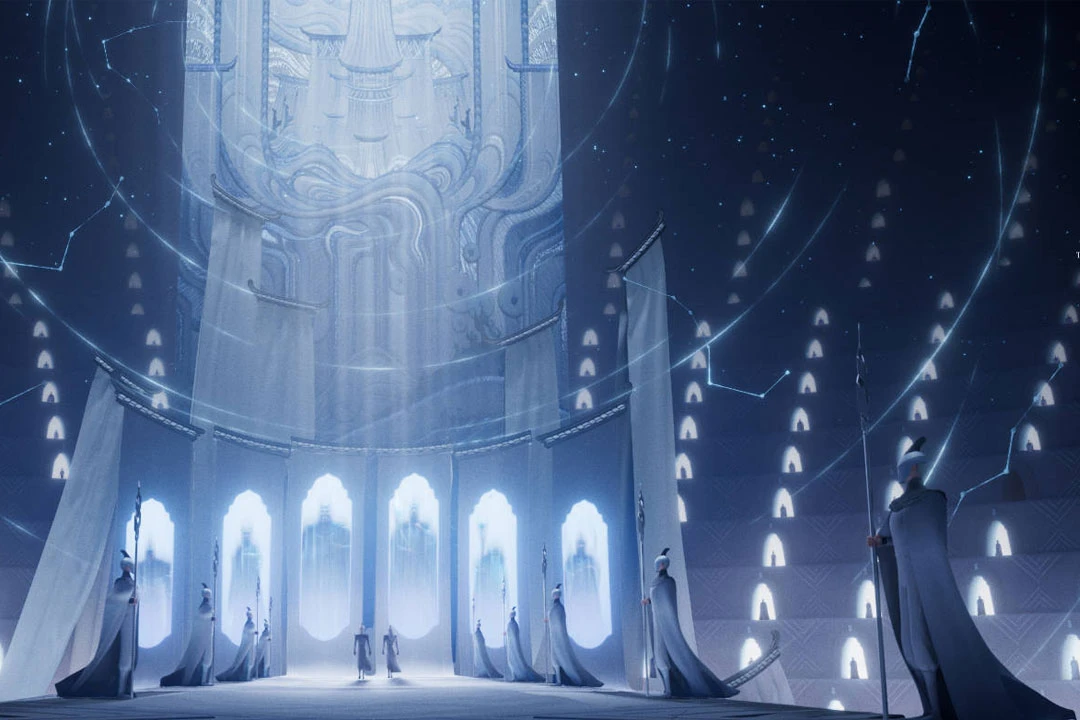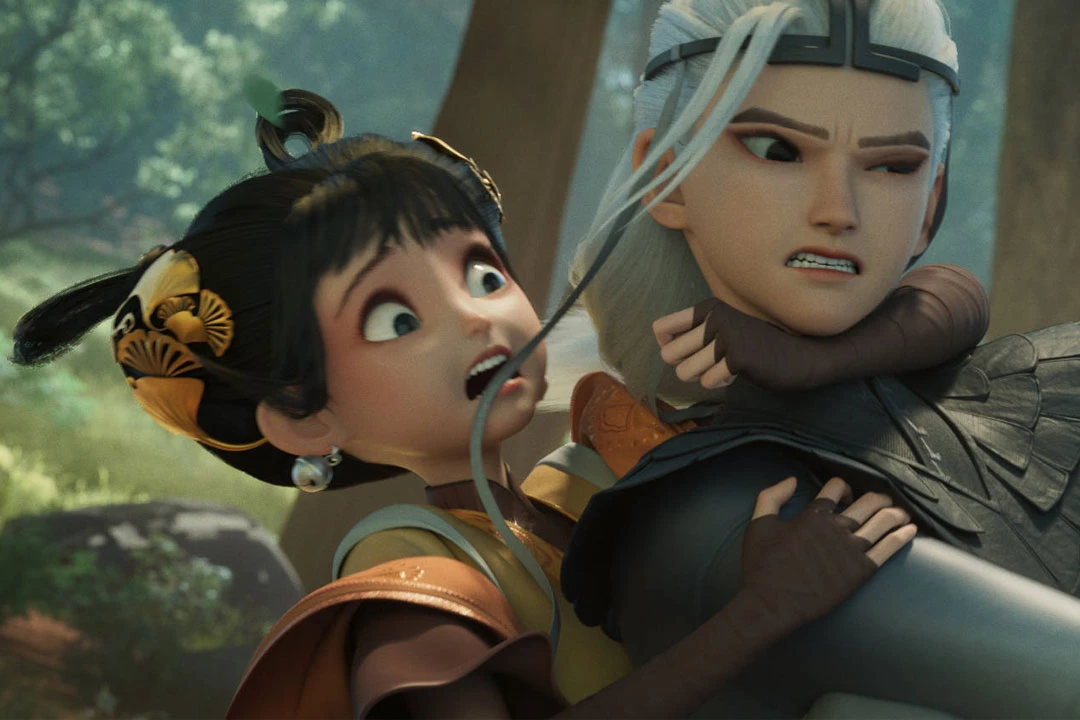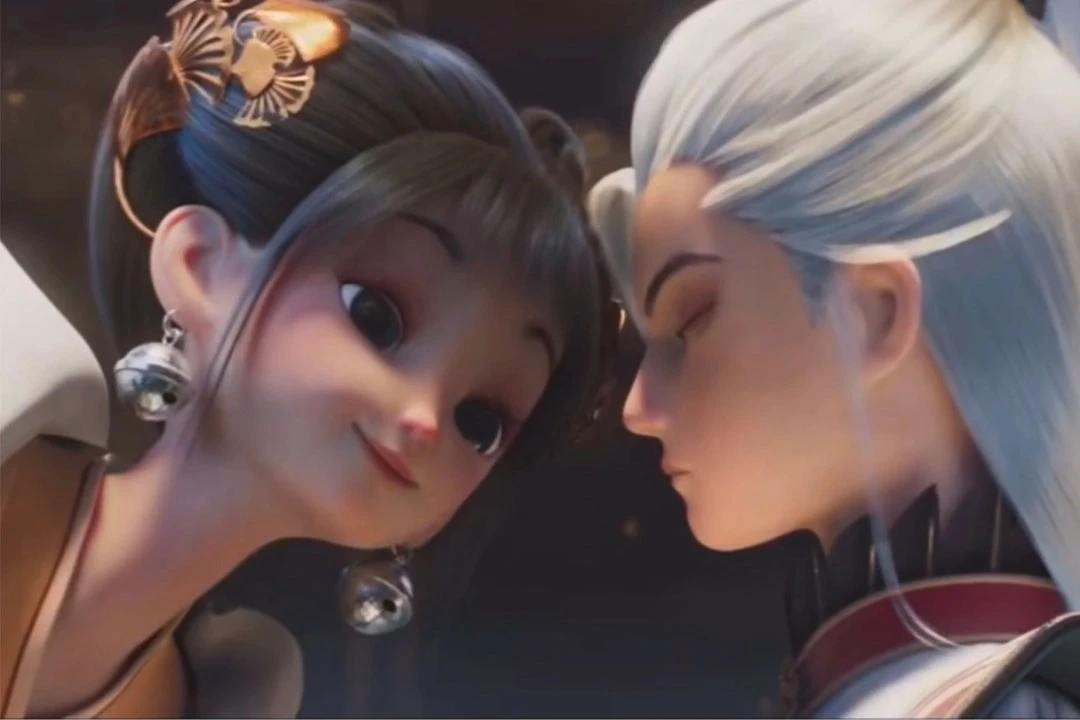The release of the animated film "Fallen from the Heaven" (落凡尘) on July 12 coincided with Universal Pictures' "Despicable Me 4" (神偷奶爸 4), marking the beginning of the summer box office battle. Despite the dominance of "Silent Killer" in the box office, "Fallen from the Heaven" struggled with a mere 5.3% screen share.
Amidst market expectations for "Claw Doll" to invigorate the summer box office, the consensus was that animated films would face stiff competition. However, the creators of "Fallen from the Heaven" persevered, refusing to withdraw or compromise amid the current challenges.
Continuing the Myth: Beyond Romance, Embracing Family Bonds
The tale of the Weaver Girl and the Cowherd, a familiar narrative to Chinese audiences, traditionally focuses on romance between a celestial and a mortal. "Fallen from the Heaven" shifts this focus onto the neglected characters in the story—their two children, left behind as their mother returns to the heavens and their father remains on earth. The son, Jin Feng, strives to redeem his mother's mistake by capturing the twenty-eight constellations, while the daughter, Xiao Fan, grows up orphaned, yearning to reunite with her mother in the celestial realm.
This narrative departure from traditional mythology not only enriches the story with familial themes but also explores the complexities of relationships beyond romantic love. The film's portrayal of the Weaver Girl emphasizes her sacrificial role, not driven by romantic longing but by a sense of duty and protection for both her family and the mortal realm.
Crafting a Visual and Narrative Marvel
Unlike many domestic animations criticized for lavish visuals but hollow storytelling, "Fallen from the Heaven" meticulously weaves a narrative that resonates with audiences on an emotional level. Despite its limited screen time, the film has garnered a diverse fanbase ranging from influencers to everyday moviegoers, underscoring its ability to connect through its storytelling rather than spectacle alone.
The celestial setting of the film contrasts starkly with the vibrant colors and bustling life of the mortal world. This visual dichotomy not only underscores the divide between the realms but also highlights the mundane yet cherished aspects of human existence—like enjoying hotpot with family or witnessing the festivity of dragon lanterns.
Director Zhong Ding's meticulous attention to detail extends beyond visual aesthetics. By grounding the celestial narrative in the rich tapestry of Chinese mythology, specifically the twenty-eight constellations, the film breathes new life into lesser-known cultural elements. Each constellation is meticulously designed to embody both combat and humanoid forms, drawing from the traditional four symbols and animal motifs.
The reinterpretation of characters like the Weaver Girl not only challenges traditional gender roles but also celebrates resilience and autonomy in female characters. Xiao Fan, for instance, embodies strength and courage in adversity, refusing to resent her mother for abandoning her but instead growing stronger through her challenges.
The Charms of Mortal Life: Finding Magic in the Ordinary
While celestial realms are often portrayed as pristine and ethereal, "Fallen from the Heaven" elevates the charm of mortal life, depicting it as vibrant, colorful, and deeply rooted in human emotions. Through the eyes of Jin Feng and Xiao Fan, the audience experiences the joys and struggles of growing up in the mortal world—shared meals, familial bonds, and the simple pleasures of everyday life.
The film's portrayal of family dynamics, sacrifice, and the enduring human spirit resonates across cultures, offering a universal message about the importance of family, resilience, and finding beauty in the ordinary.
In challenging the conventions of traditional storytelling, "Fallen from the Heaven" not only entertains but also inspires reflection on the complexities of human relationships and the enduring power of family ties—whether in the heavens above or the vibrant streets below. As the film continues to capture hearts and minds, it stands as a testament to the enduring appeal of mythology in contemporary storytelling.
Embracing Cultural Roots: A Journey into Myth and Modernity
"Fallen from the Heaven" transcends the boundaries of traditional animation by embracing Chinese cultural mythology while infusing it with contemporary storytelling sensibilities. This approach not only revitalizes age-old tales but also bridges the gap between past and present, offering audiences a fresh perspective on familiar legends.
Visual Splendor and Symbolism
Visually, the film captivates with its intricate designs and vibrant palette. The celestial realm is depicted with a minimalist aesthetic, characterized by clean lines and ethereal hues of white, blue, and green. In contrast, the mortal world bursts with warmth and life, portrayed through rich shades of red, yellow, and orange. This stark contrast not only serves to differentiate between the realms but also underscores the emotional and thematic depths of the narrative.
The meticulous attention to detail extends to character design, particularly the depiction of the twenty-eight constellations as anthropomorphic beings. Each constellation embodies unique traits and powers, rooted in both mythical lore and contemporary imagination. For instance, characters like the Bull and the Maiden are reimagined with distinct animal forms and personalities, aligning with their celestial roles.
A Narrative of Resilience and Redemption
At its core, "Fallen from the Heaven" explores themes of resilience, redemption, and the enduring bonds of family. Jin Feng's quest to capture the twenty-eight constellations becomes a metaphor for personal growth and the pursuit of justice, while Xiao Fan's journey to reunite with her mother underscores the power of familial love and forgiveness.
The film's narrative structure deftly balances action-packed sequences with poignant moments of introspection, offering viewers a compelling emotional journey. Each character's arc is meticulously crafted to resonate with universal themes of identity, sacrifice, and the search for belonging.
Beyond its mythological roots, "Fallen from the Heaven" resonates with contemporary audiences by addressing universal themes of love, duty, and self-discovery. By grounding the celestial beings in relatable human emotions and struggles, the film transcends cultural boundaries to touch upon the shared experiences of audiences worldwide.
The decision to focus on familial bonds rather than romantic relationships also sets "Fallen from the Heaven" apart from traditional narratives, offering a refreshing perspective on love and sacrifice. The portrayal of strong, independent female characters like the Weaver Girl challenges stereotypes and celebrates resilience in the face of adversity.
Director Zhong Ding's visionary approach to storytelling not only honors Chinese cultural heritage but also propels it into the realm of contemporary cinema. By reinterpreting traditional myths through a modern lens, "Fallen from the Heaven" revitalizes cultural narratives for a new generation, ensuring their relevance and resonance in today's globalized world.
Through its blend of breathtaking animation, compelling storytelling, and universal themes, "Fallen from the Heaven" stands as a testament to the enduring power of myth and the boundless possibilities of animation as a storytelling medium. As the film continues to capture the imagination of audiences worldwide, it paves the way for future explorations into the rich tapestry of Chinese cultural heritage.
"Fallen from the Heaven" is more than just an animated film; it is a testament to the enduring appeal of myth and the transformative power of storytelling. By weaving together elements of tradition and innovation, the film invites audiences on a journey of discovery and rediscovery—a journey that celebrates the beauty of cultural heritage while embracing the limitless potential of the human imagination.



